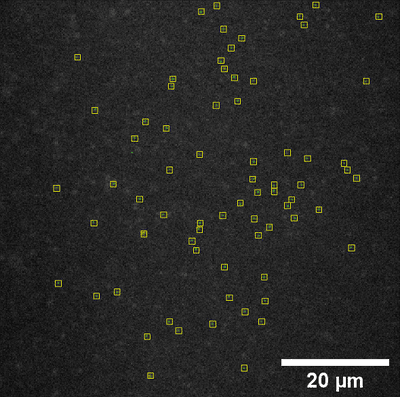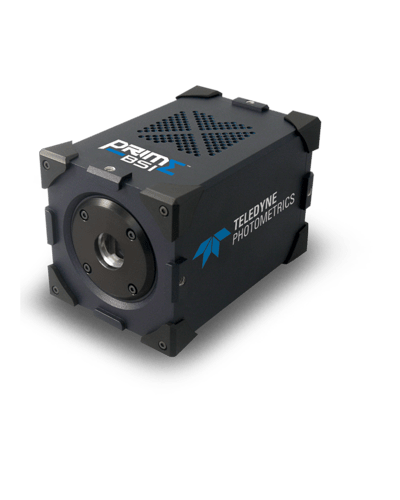TIRF Microscopy, Physics of Cellular Interactions Group
Dr. Kristina Ganzinger , Group Leader
Christian Niederauer , PhD Student
Marko Kamp , Facility Technician
Physics of Cellular Interactions Group at AMOLF
Background
The group of Dr. Ganzinger is interested in the basic physical principles of immunological signaling. The group uses synthetic biology to reconstitute signaling pathways, and single molecule imaging to enable them to understand how receptors and ligands work together to transmit signals through the cell.
In particular, the group is interested in how the length of time the ligand is associated with the receptor can provide a means for a receptor to differentiate between multiple ligands. By labeling the receptor subunits their individual diffusion can be visualized prior to ligand binding events. Once the ligand is added, colocalization of the subunits can be observed and receptor interactions inferred, as well as the kinetics of different ligand binding.

Figure 1 Snippet of a movie taken with one of the receptor-proteins on a membrane. The single
molecules are localized and fit with a Gaussian to find their position with sub diffraction-limited
precision.
Challenge
The group uses site-specific organic fluorophores to label the different subunits of the receptor of interest to ensure they have a large enough photon budget to track the molecules with enough signal. As they are monitoring multiple receptors and ligands, the experiments involve three color imaging, potentially including the far-red, and thus a camera with a high quantum efficiency over a broad spectral range is essential for their research.
The subunits can also diffuse quickly, meaning a camera with a high frame rate is needed to permit accurate tracking. Likewise, in order to track the molecules simultaneously, the sensor must be split into three. As such, a camera with a large field of view is also essential.
It used to be that people would go for EMCCDs for their high quantum efficiency. However, back-illuminated sCMOS cameras now offer the same quantum efficiency but with the larger field of view which, for us, was essential for our multicolor acquisitions
Dr. Kristina Ganzinger , Christian Niederauer , Marko Kamp
Solution
The group is now using the Teledyne Photometrics Prime BSI on their custom home built TIRF system to simultaneously image in up to three colors at high frame rates.
Christian told us, "We picked the Teledyne Photometrics Prime BSI camera partly due to the large field of view, which is essential as we split the sensor to permit imaging with two/three colors simultaneously, but also for the broad quantum efficiency suitable for imaging at multiple wavelengths. We also needed a camera that could offer high frame rates as the receptor subunits diffuse quite quickly." He went on to say that, "The Prime BSI also offers the ideal pixel size to match Nyquist with our 60X objective offering us the best resolution possible".
Christian concluded, "It used to be that people would go for EMCCDs for their high quantum efficiency. However, back-illuminated sCMOS cameras now offer the same quantum efficiency but with the larger field of view which, for us, was essential for our multicolor acquisitions."

Learn More About The Prime BSI